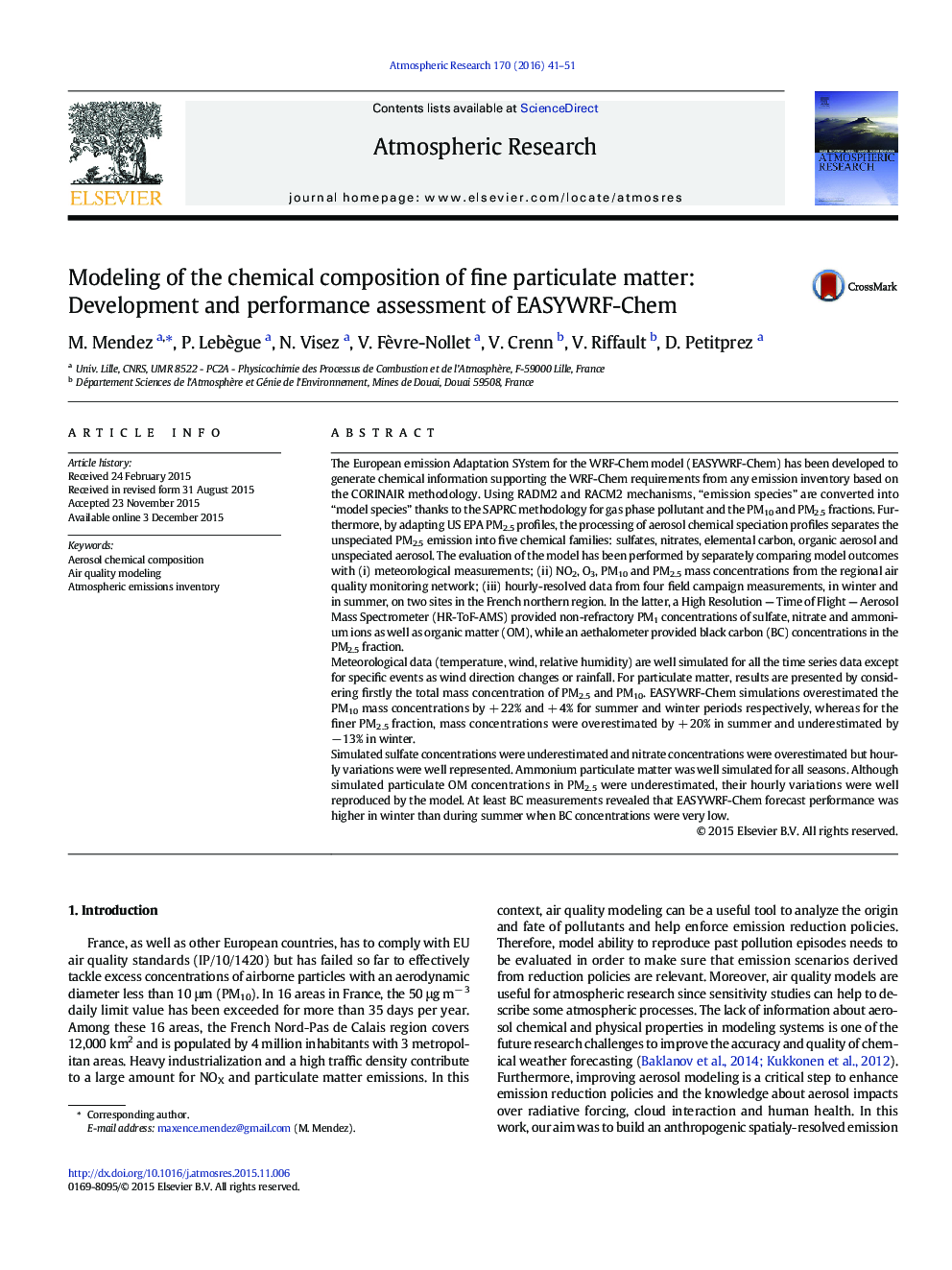| Article ID | Journal | Published Year | Pages | File Type |
|---|---|---|---|---|
| 4449581 | Atmospheric Research | 2016 | 11 Pages |
•EASYWRF-Chem is created to model the chemical composition of anthropogenic primary aerosol.•Modeled composition of aerosol is compared to high time-resolution measurements.•Particulate organic matter is underestimated by EASYWRF-Chem.•Concentrations and temporal variations of nitrate and ammonium are well simulated.•Sulfates are underestimated in the aerosol phase.
The European emission Adaptation SYstem for the WRF-Chem model (EASYWRF-Chem) has been developed to generate chemical information supporting the WRF-Chem requirements from any emission inventory based on the CORINAIR methodology. Using RADM2 and RACM2 mechanisms, “emission species” are converted into “model species” thanks to the SAPRC methodology for gas phase pollutant and the PM10 and PM2.5 fractions. Furthermore, by adapting US EPA PM2.5 profiles, the processing of aerosol chemical speciation profiles separates the unspeciated PM2.5 emission into five chemical families: sulfates, nitrates, elemental carbon, organic aerosol and unspeciated aerosol. The evaluation of the model has been performed by separately comparing model outcomes with (i) meteorological measurements; (ii) NO2, O3, PM10 and PM2.5 mass concentrations from the regional air quality monitoring network; (iii) hourly-resolved data from four field campaign measurements, in winter and in summer, on two sites in the French northern region. In the latter, a High Resolution — Time of Flight — Aerosol Mass Spectrometer (HR-ToF-AMS) provided non-refractory PM1 concentrations of sulfate, nitrate and ammonium ions as well as organic matter (OM), while an aethalometer provided black carbon (BC) concentrations in the PM2.5 fraction.Meteorological data (temperature, wind, relative humidity) are well simulated for all the time series data except for specific events as wind direction changes or rainfall. For particulate matter, results are presented by considering firstly the total mass concentration of PM2.5 and PM10. EASYWRF-Chem simulations overestimated the PM10 mass concentrations by + 22% and + 4% for summer and winter periods respectively, whereas for the finer PM2.5 fraction, mass concentrations were overestimated by + 20% in summer and underestimated by − 13% in winter.Simulated sulfate concentrations were underestimated and nitrate concentrations were overestimated but hourly variations were well represented. Ammonium particulate matter was well simulated for all seasons. Although simulated particulate OM concentrations in PM2.5 were underestimated, their hourly variations were well reproduced by the model. At least BC measurements revealed that EASYWRF-Chem forecast performance was higher in winter than during summer when BC concentrations were very low.
